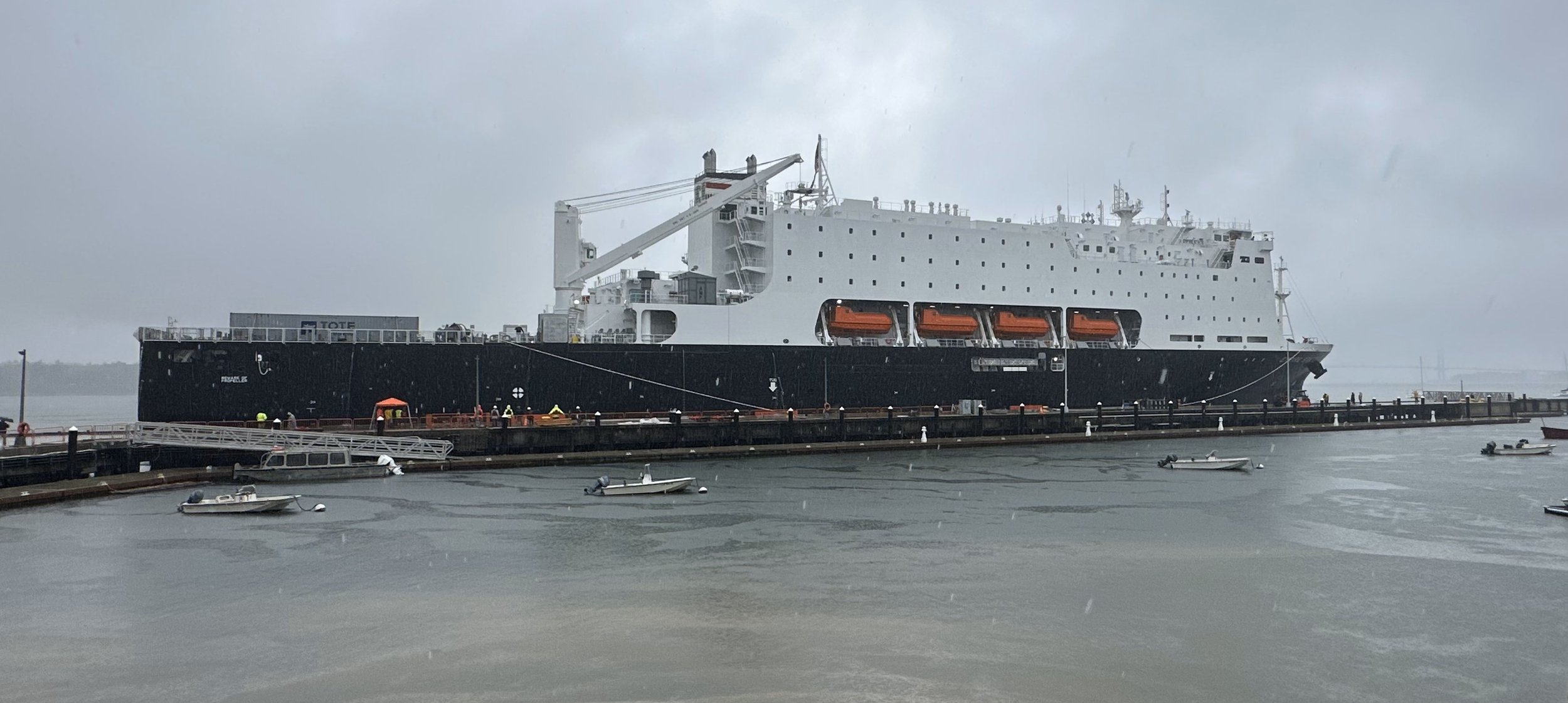Background
The MEPC 80 session adopted the 2023 IMO Strategy on Reduction of GHG Emissions from Ships, with enhanced targets to tackle harmful emissions.
The revised IMO GHG Strategy includes an enhanced common ambition to reach net-zero GHG emissions from international shipping close to 2050, a commitment to ensure the uptake of alternative zero and near-zero GHG fuels by 2030, and indicative checkpoints for 2030 and 2040. Read full details here.
MEPC 80 highlights:
Tackling climate change - 2023 IMO GHG Strategy adopted
Energy efficiency of ships – draft amendments to IMO ship fuel oil consumption Data Collection System (DCS) approved
Ballast water management – including approval of the Convention Review Plan and adoption of amendments to the BWM Convention
Biofouling management - revised Guidelines adopted
Designation of a Particularly Sensitive Sea Area in the in the North-Western Mediterranean to protect cetaceans
Underwater noise - revised guidelines adopted
Tackling marine litter – work on plastic pellet carriage / lost containers
Ship-to-ship transfer - proposed Assembly resolution
Special areas –effective date for the Red Sea and the Gulf of Aden special areas under MARPOL Annexes I and V
Other matters from the PPR Sub-Committee
Herbert Engineering Comments
July 7, 2023 - IMO wraps up its MEPC 80 and ISWG-GHG 14/15 meetings
Was it a monumental failure to meet the Paris Agreement or a historic step on the path of an ambitious greenhouse gas strategy?
Perhaps both? It all depends on your perspective.
The IMO is a 175-nation consensus organization (about 90 countries attended MEPC) with several dozen industry and environmental non-voting observer non-governmental organizations (NGOs). Agreements are typically tricky and fraught with politics and special interest pressures.
Indeed, the final agreement on 2030 and 2040 targets falls short of the UN’s latest climate science-based goals to keep global warming below 1.5C, which is the only measure of success or failure the environmental NGOs considered. However, after five years, the IMO has reached a historic agreement on significantly revising its 2018 GHG strategy goal for 2050, including expectations for more modest intermediate reductions by 2030 and 2040. These strategic goals, along with the endorsement of the well-to-wake basis for fuel factors, the 2-year timetable for discussions about mid-term market-based measures, and updating the CII and EEDI regulations, all set the stage for a mandatory IMO GHG framework through mid-century.
What was agreed upon for GHG emissions?
Before this meeting, the IMO’s 2018-agreed Initial GHG Strategy was to reduce emissions by 50% by 2050 compared to 2008. Over the past five years, there has been an emerging recognition that under the Paris Agreement, additional action would be required to limit the global average temperature rise to 1.5°C above pre-industrial levels and that the previous 50% reduction target was not sufficiently ambitious enough. This ambition issue was under discussion for several last sessions, but MEPC 80 represented the self-imposed deadline to resolve the issue.
Following the recommendations of the Intersessional Working Group on GHG meetings 14 & 15, which immediately preceded the MEPC meeting, IMO agreed to update the GHG strategy as follows:
- An updated vision of reducing GHG emissions from international shipping and, as a matter of urgency, aims to phase them out as soon as possible while promoting a just and equitable transition.
- to peak GHG emissions from international shipping as soon as possible and to reach net-zero GHG emissions by or around, i.e. close to 2050;
- to reduce CO2 emissions per transport work, as an average across international shipping, by at least 40% by 2030, compared to 2008;
- to reduce the total annual GHG emissions from international shipping by at least 20%, striving for 30% by 2030, compared to 2008;
- to reduce the total annual GHG emissions from international shipping by at least 70%, striving for 80% by 2040, compared to 2008;
Some delegations were disappointed by the soft language (some calling it vague and non-committal) using “net-zero” and “close to 2050”, but this is pretty typical of IMO and consensus drafting. It is important to note that the measure of GHG was agreed to be based on “well-to-wake GHG emissions of marine fuels as addressed in the Guidelines on lifecycle GHG intensity of marine fuels (LCA guidelines) with the overall objective of reducing GHG emissions within the boundaries of the energy system of international shipping and preventing a shift of emissions to other sectors.”
What happens now?
Specific agreements on extending the EEDI and CII regulations and adoption of any mid-term technical or market-based measures could not be agreed upon and adopted at this session. Following further GHG assessments, it was resolved that these measures should be decided by 2025 for adoption in 2027. So, for the next two years, efforts will be focused on formalizing proposals and attempting to reach an agreement on these issues. Nothing of mandatory regulations and MARPOL amendments related to GHG emissions should be expected until 2025.
Forecasting Graphs to come






